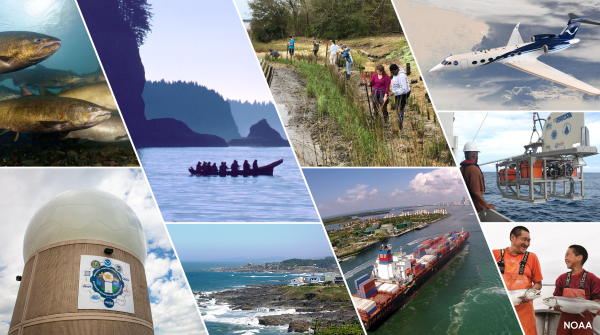Input from across sectors will build on existing efforts to make NOAA’s climate data, information, science and tools more accessible and inclusive
July 20, 2023

More than ever, communities across the country are facing the impacts of climate change, from prolonged drought to hazardous flooding and widespread heat waves. In 2022, there were 18 separate weather and climate disaster events in the U.S. with losses exceeding $1 billion each — totaling over $165 billion — and recent Census Bureau data show that disasters displaced more than three million Americans in 2022 alone. There have already been 12 separate billion dollar disasters in the first six months of 2023.
A changing climate has implications for the safety, well-being and resilience of our nation’s communities — especially our most underserved. That’s why today, NOAA has released a Request for Information (RFI) that seeks feedback on its delivery of climate data, information, science and tools, or “climate services,” to help ensure that this vital information reaches all U.S. communities in a way that is accessible, inclusive and usable.
The RFI also focuses on how NOAA can increase capacity and access to climate services for climate preparedness, resilience and adaptation planning in historically underserved communities — including tribal and Indigenous communities. The RFI will also address how the agency can better include indigenous and local knowledge in its climate services.
These communities face disproportionate impacts from climate change, which can be compounded by long-standing and systemic economic, social, civic and environmental inequity. Yet, historically, these communities have had the least access to resources that would help them to advance their community priorities, build resilience to climate-related disasters and adapt to a changing climate, and avoid significant future damages.
Building on NOAA’s Climate Equity Roundtables, regional pilots and efforts to build a Climate-Ready Nation, this RFI will gather critical feedback that will be used to develop an Action Plan designed to:
- Make NOAA’s climate services more accessible, understandable, usable, inclusive of the social and economic impacts of climate change and capable of addressing complex hazards.
- Build capacity for and support users of all disciplines and backgrounds, particularly historically underserved communities and tribal communities, by expanding science literacy and successfully applying climate services to science-based decisions about climate risk and resilience.
The RFI will be open for a 60-day comment period and will close September 21, 2023. NOAA is especially seeking feedback from the public health, affordable housing, food security and economic development sectors, communities with environmental justice concerns, tribal and Indigenous communities and other historically underserved communities that NOAA aims to better and more fully support.
Written or recorded comments can be emailed to climate.input@noaa.gov. Comments will not be accepted via phone. Commenters are encouraged to join regional and community-specific listening sessions to engage with NOAA staff and provide comments in real time.
Find more information about the RFI and listening session registration at the following links:


 Biden-Harris Administration announces $2.6 billion framework through Investing in America agenda to protect coastal communities and restore marine resources
Biden-Harris Administration announces $2.6 billion framework through Investing in America agenda to protect coastal communities and restore marine resources  A photo collage highlighting some of the initiatives from NOAA’s Inflation Reduction Act investments. (Image credit: NOAA) The historic $2.6 billion investment in climate resilience and coastal communities will help ensure communities, especially Tribes and vulnerable populations, have the resources and support needed to prepare, adapt and build resilience to weather and climate events as well as strengthen workforce development, marine resources, nature-based solutions, conservation, regional partnerships and Tribal priorities. The IRA funds will complement the investments already outlined in the nearly $3 billion Bipartisan Infrastructure Law (BIL) funding, including the
A photo collage highlighting some of the initiatives from NOAA’s Inflation Reduction Act investments. (Image credit: NOAA) The historic $2.6 billion investment in climate resilience and coastal communities will help ensure communities, especially Tribes and vulnerable populations, have the resources and support needed to prepare, adapt and build resilience to weather and climate events as well as strengthen workforce development, marine resources, nature-based solutions, conservation, regional partnerships and Tribal priorities. The IRA funds will complement the investments already outlined in the nearly $3 billion Bipartisan Infrastructure Law (BIL) funding, including the